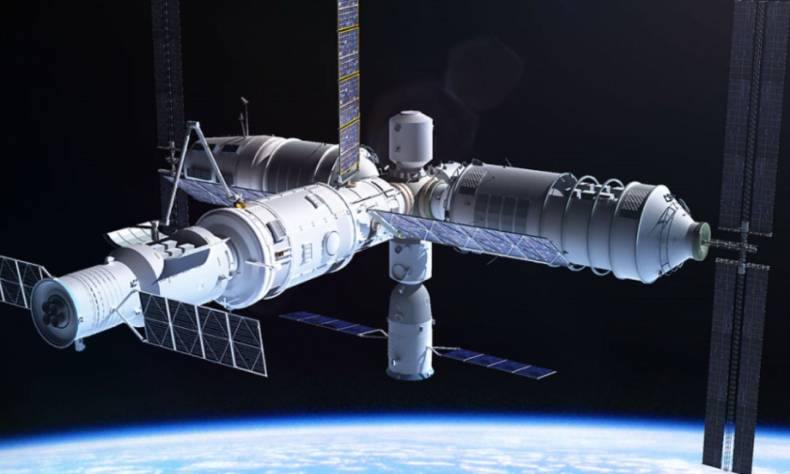
Tiangon I – The Western Media Rumor-Mill at Work
Recently, western media such as the Guardian, New York Post, and CBS News have all been commenting on China’s Tiangong I space lab, reporting claims that it is “out of control” and will crash land on the mid-low latitudes of the Earth.
Tiangon I -The Mysterious Spacecraft that will Crash to Earth
Recently, the Guardian, New York Post, and CBS News and other western media have all been commenting on China’s Tiangong I space lab, reporting that it is “out of control” and will crash land on the mid-low latitudes of the Earth. They have even drawn maps of the potential crashland area. This news has triggered alarm within some “targeted” countries and among the public there.

what is this Tiangong I that is attracting so much negative comment? Tiangong I, China’s first space lab, was launched on September 29th, 2011, bringing China into the second phase of the second period of its “Three phase Manned Space Program”. This meant that China had achieved the initial capability of establishing a space station that can be manned for short periods.
Over the following three years, China’s Shenzhou VIII, Shenzhou IX and Shenzhou X spacecraft all conducted dockings with the Tiangong space lab. This system tested the key technologies of autonomous docking and manned docking, making China the third country to have created its own independent technology for autonomous docking.

On March 16th 2016, Tiangong I completed its task and terminated its services. Then the rumors began to say that it would crash to Earth and pose a threat.
In September 2016, before the launch of the Tiangong II, Wu Ping, spokesman for China’s Manned Space Project and Deputy Director of China Manned Space Agency stated that Chinese scientists are constantly monitoring Tiangong I. Its average orbital altitude is around 370 kilometers, and is decaying at a rate of 100 meters per day. Ultimately it will crash into the South Pacific Ocean. China’s space authorities will release a weekly report on the condition of Tiangong I through China Manned Space Agency’s website. The latest announcement said the space lab orbited at an average altitude of 286.5 kilometers from Dec 17 to 24, noting that it was “in a stable condition without any abnormalities”.
Tiangong I is under China’s Constant and Close Surveillance
As early as May 4th 2017, The Permanent Mission of China to the United Nations formally submitted a notification to the UN General Assembly Committee on the Peaceful Uses of Outer Space, explaining the plans for Tiangong I. Zhu Zongpeng, a senior scientist with the China Academy of Space Technology, which built the Tiangong series, told the media that Chinese scientists are constantly monitoring Tiangong I and will manage its fall back to Earth in the first half of 2018. “Parts of the spacecraft will burn out during re-entry, while the rest will fall into a designated area of the ocean without endangering people and property on the ground,” he said.
According to Pang Zhihao, an aerospace expert, it is standard international practice to control decommissioned large spacecraft in near-Earth orbit, and bring them down in an abyssal region in the South Pacific called the “spacecraft graveyard”. Confirming Wu Ping’s statement, he said “The difference is that the 8.5-metric-ton Tiangong I is much smaller than the 20-metric-ton ‘Peace’ space station, and most parts of Tiangong I will burn up as the spacecraft re-enters the atmosphere.”
Therefore, the risk of any danger or damage to aviation or ground activities is very low.
Efforts Made by China
China started a space debris action plan in 2000 and has allocated considerable resources to researching the detection, surveillance and control of space debris. We recently completed the first phase of space debris monitoring, which provided the emergency response alarm for manned spacecraft and lunar exploration project. China has developed high-performance protective materials and advanced protection structures, promulgated the Measures for the Administration of Space Debris Mitigation and Protection, and implemented final passivation treatment (covering residual rocket propellant emissions, pressurized gas emissions in storage, and high-pressure gas deflation and battery discharge) on the active Long March series. The management of several abandoned satellites indicates that our country takes the issue of space debris very seriously. China has established a specialized agency – The Space Debris Monitoring and Application Center, part of the China National Space Administration, which is responsible for analyzing hazards, risk prevention, assessing spacecraft payload effectiveness, safe re-entry of space objects, analyzing and disassembly of spacecraft, risk mitigation assessment, analyzing geosynchronous orbital safety, and surveillance of the space debris environment.
Foreign media have a habit of exaggerating such issues. China’s reasonable military development and its gradual assumption of a more prominent role in international affairs have been quickly interpreted as “The China Threat”. The reporting on Tiangong I is no more than a continuation of this theory. Facts will shortly demonstrate that the whole story was fake news.
Source: Xinhua, CHINANEWS.com, cnsa.gov.cn
Editor: Liana
 Facebook
Facebook
 Twitter
Twitter
 Linkedin
Linkedin
 Google +
Google +










